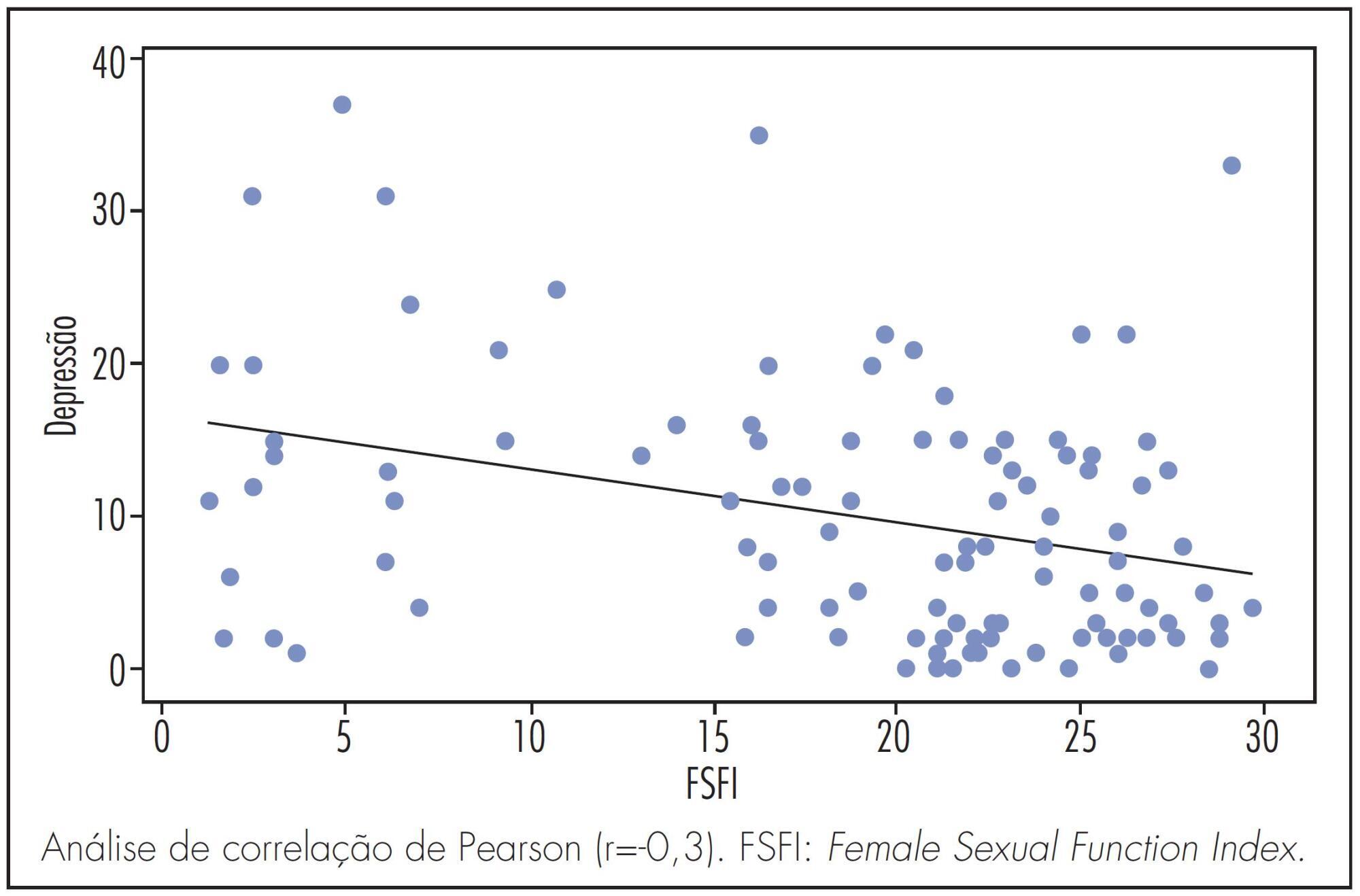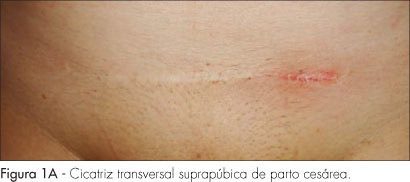Summary
Summary
Revista Brasileira de Ginecologia e Obstetrícia. 2014;36(4):152-156
DOI 10.1590/S0100-720320140050.0004
It was to compare pregnant women who experienced recurrent spontaneous abortion (RSA) and those who did not in terms of the prevalence of depressive symptoms and sexual behavior.
A prospective case-control study was carried out. The first group consisted of women with RSA and the second, of primigravidae. The Beck Depression Inventory (BDI), the Female Sexual Function Index (FSFI) and one more questionnaire, developed by the authors themselves, about emotional aspects resulting from sexual intercourse during pregnancy were applied. The Student t-test was used to compare quantitative variables with normal distribution, and categorical variables were compared by the chi-square test or Fisher's exact test. The level of significance was set at p<0.05.
The BDI showed (19.9 versus 10.0%) approximately twice the incidence of depression in the RSA group. Regarding sexual function, the average scores of the FSFI were 21.1 and 16.4 (p<0.05) for the study and control groups, respectively, although no significant difference was observed only in the desire domain (average 3.4±1.3 for the RSA group and 3.7±1.1 for control group) (p=0.1). We observed that, regardless the presence or absence of an RSA history among the pregnant women, the higher the depression score, the lower the sexuality score (r=-0,3).
The RSA pregnant group often experiences twice higher depression and more impaired sexual function. There is an inverse association between depression and sexual function.

Summary
Revista Brasileira de Ginecologia e Obstetrícia. 2020;42(3):152-159
To analyze the interobserver and intraobserver reproducibility of the visualization and continuity of the juncional zone (JZ) by three-dimensional (3D) ultrasound in infertile women, and to evaluate the sociodemographic, hormonal, and structural factors that influence these assessments.
A prospective study conducted at the Assisted Reproductive Technology Unit of Hospital Senhora da Oliveira, in the city of Guimarães, Portugal. Transvaginal 3D ultrasonography was performed, and 2 volumes were generated per case. Two observers who were blinded to each other's work analyzed these volumes, choosing the best coronal section. Four months later, one of the observers performed the same methodology. The JZ visualization was classified as optimal, satisfactory, and unsatisfactory, and the JZ continuity, as continuous and discontinuous. The interobserver and intraobserver agreements were analyzed. The influence of hormonal, structural, and sociodemographic factors on the JZ was evaluated.
In total, 65 women were included in the present study. The interobserver reproducibility was substantial for JZ visualization and continuity (k = 0.635 and 0.753 respectively), and the intraobserver reproducibility was very good for JZ visualization and continuity (k = 0.884 and 0.816 respectively). Trilaminar endometrial pattern was associated with optimal JZ visualization (p = 0.012). The increase of 1 unit in the level of serum estradiol represents a 9.9% decrease in the odds of unsatisfactory visualization of the JZ (odds ratio [OR] = 0.9; 95% confidence interval [95%CI] = 0.814–0.996; p = 0.042). Endometriosis increases the odds of unsatisfactory visualization by 24 times (OR = 23.7; 95%CI = 1.262–437.057; p = 0.034). The prevalence of discontinuous JZs was of 60%. Myomas and endometriosis were associated with discontinuous JZs (p = 0.034 and 0.016 respectively).
The assessment of JZ visualization and continuity by 3D ultrasound is reproducible enough to be used in the clinical practice.

Summary
Revista Brasileira de Ginecologia e Obstetrícia. 2015;37(4):152-158
DOI 10.1590/SO100-720320150005282
To determine the average age at the onset of menopause and to investigate menopausal symptoms in women in a metropolitan region in Southeastern Brazil.
A descriptive, exploratory, cross-sectional study was conducted with 749 women (a population-based household survey). The dependent variable was the intensity of menopausal symptoms assessed by th Menopause Rating Scale (MRS). The independent variables were sociodemographic data, health-related habits and problems, self-perception of health, and gynecological background. Statistical analysis was carried out by the χ2 test and Poisson regression using the backward selection criteria.
The mean age of the women was 52.5 (±4.4) years. With regard to menopausal status, 16% were premenopausal, 16% perimenopausal and 68% postmenopausal. The mean age at the onset of menopause was 46.5 (±5.8) years. The intensity of menopausal symptoms was defined according to the median MRS score and was considered severe for values above 8. Depression/anxiety (PR=1.8; 95%CI 1.5-2.2; p<0.01), rheumatic diseases (PR 1.5; 95%CI 1.2-1.7; p<0.01), self-perception of health as fair/poor/very poor (PR 1.4; 95% CI 1.2-1.7; p<0.01), history of abortion (PR 1.3; 95%CI 1.1-1.4; p<0.01), current or previous treatment for menopausal symptoms (PR 1.2; 95%CI 1.1-1.4; p<0.01), peri- or postmenopausal status (PR 1.4; 95%CI 1.1-1.7; p<0.01), number of normal deliveries >1 (PR 1.2; 95%CI 1.02-1.4; p<0.01) and asthma (PR 1.2; 95%CI 1.01-1.4; p<0.01) were associated with more severe menopausal symptoms. Older age (PR 0.96; 95%CI 0.96-0.97; p<0.01) was associated with less severe symptoms.
The severity of menopausal symptoms was related to a wild range of factors, especially presence of chronic diseases, a larger number of pregnancies, use of hormone therapy, and worse self-rated health. A better understanding of these factors can help to reduce the impact of symptoms on quality of life, and to identify groups of women who are likely to need more care during and beyond menopause.
Summary
Revista Brasileira de Ginecologia e Obstetrícia. 2000;22(3):153-157
DOI 10.1590/S0100-72032000000300006
Purpose: to evaluate, in a Brazilian population, the possible association between history of sexual violence and some of the more frequent gynecologic complaints related by women. Methods: secondary analysis of data from a cross-sectional study in which 1838 women between 15 and 49 years of age were interviewed in their homes. They were residents of the cities of Campinas and Sumaré, in the state of São Paulo. A structured and pretested questionnaire was used, which allowed to characterize the interviewees' history of sexual violence, the existence of sexual dysfunctions and the presence of gynecologic symptoms in the year previous to the interview. The statistical differences were evaluated by the chi² test. Results: little more than one third (38.1%) of the women did not report history of sexual violence; 54.8% related that at least once they had had sexual intercourse against their will, without being forced to, although 23% mentioned some kind of coercion; 7.1% reported having been forced to have sex. Statistical association was found between history of sexual violence and the reference to gynecologic complaints and sexual dysfunctions. Conclusions: it was observed that even less aggressive forms of imposition of the man's will in the couple's sexual life were associated with a higher prevalence of the most frequent gynecologic complaints. The gynecologist must, therefore, have in mind this etiological factor which is rarely being considered at the present time.
Summary
Revista Brasileira de Ginecologia e Obstetrícia. 2002;24(3):153-160
DOI 10.1590/S0100-72032002000300002
Purpose: to study the fetal hemodynamic profile in high-risk pregnancy and correlate it with perinatal results. Methods: transverse prospective study of 108 patients of the Obstetric Clinic of the Hospital das Clínicas, São Paulo University School of Medicine. The patients were evaluated at the Fetal Surveillance Unit, and Doppler examinations of umbilical, aorta, middle cerebral artery, inferior vena cava and ductus venosus were performed. The criteria for inclusion were patients whose delivery was in the next 24 hours after evaluation. Twin pregnancies and fetal malformations were excluded. Results: the hemodynamic implications in the fetal circulation were demonstrated by changes in the Doppler ultrasonographic results in the umbilical artery, aorta, middle cerebral artery, ductus venosus and in the inferior vena cava. The Doppler examinations were abnormal in the umbilical artery (25.9%), fetal aorta (24%), middle cerebral artery (34.2%), ductus venosus (18.2%) and inferior vena cava (46,6%). Segments of the fetal circulation which best correlated with the perinatal results were the umbilical artery and the ductus venosus. The abnormal results in the umbilical artery were significantly associated with 1st minute Apgar score <7 in 42.8% and need of neonatal intensive care unit in 50% of the cases. The abnormal results in the ductus venosus Doppler ultrasonography showed statistical association with 1st minute Apgar score <7 (52.6%), 5th min Apgar <7 (15.7%), acidemia at birth (60%), need of neonatal intensive care unit (52.6%) and neonatal death (21.1%). The predictive values of the ductus venosus Doppler for fetal acidemia were: sensitivity of 39.1; specificity of 90.4; positive predictive value of 60.0 and negative predictive value of 80.2. Conclusion: the Doppler ultrasonography allowed us to evaluate the fetal hemodynamics in the most varied situations and the study of the venous duct is an important examination in the evaluation of fetal hemodynamic response to hypoxia.
Summary
Revista Brasileira de Ginecologia e Obstetrícia. 2004;26(2):153-159
DOI 10.1590/S0100-72032004000200011
Pustular psoriasis of pregnancy is a rare pustular dermatosis with eruptions that develop in groups of sterile pustules at the periphery of erythematous patches of the skin. Systemic symptoms include high fever, malaise, diarrhea, delirium, dehydration, tetany, and convulsions. Therapy with systemic corticosteroids, antibiotics, replacement of fluid and electrolytes is mandatory. In this report, we present the cases of two primigravidas, 23 and 28 years old, who presented pustular psoriasis of pregnancy at the 24th and 28th week of gestation. They were treated and, in the first case, a healthy 2,500-g female fetus was born vaginally, after labor induction with oxytocin at the 35th week of gestation; in the second patient, at the 37th week of gestation, after a moderate vaginal bleeding and no perception of fetal movements for 12 hours, a stillborn 2,700-g female was born after labor induction with prostaglandin.

Summary
Revista Brasileira de Ginecologia e Obstetrícia. 2007;29(3):153-157
DOI 10.1590/S0100-72032007000300007
Dermatofibrosarcoma protuberans (DFSP) is a rare malignant neoplasia in gynecology, with probability of recurrence and low possibilities of metastasis. A 34-year-old patient after endometriosis treatment presented pain in the left inguinal region. She reported sensation of gradual increase in a solid nodule, painless at palpation, with difficult mobilization. Exeresis was proceeded with diagnostic hypothesis of endometriosis. Microscopy revealed a mesenchymal neoplasia characterized by proliferation of monomorphic fusiform cells and storiform aspect characterizing the DFSP.DFSP must be remembered in the differential diagnosis of the affections of the inguinal region in gynecology because it represents a malignant neoplasia, although it's rare.
